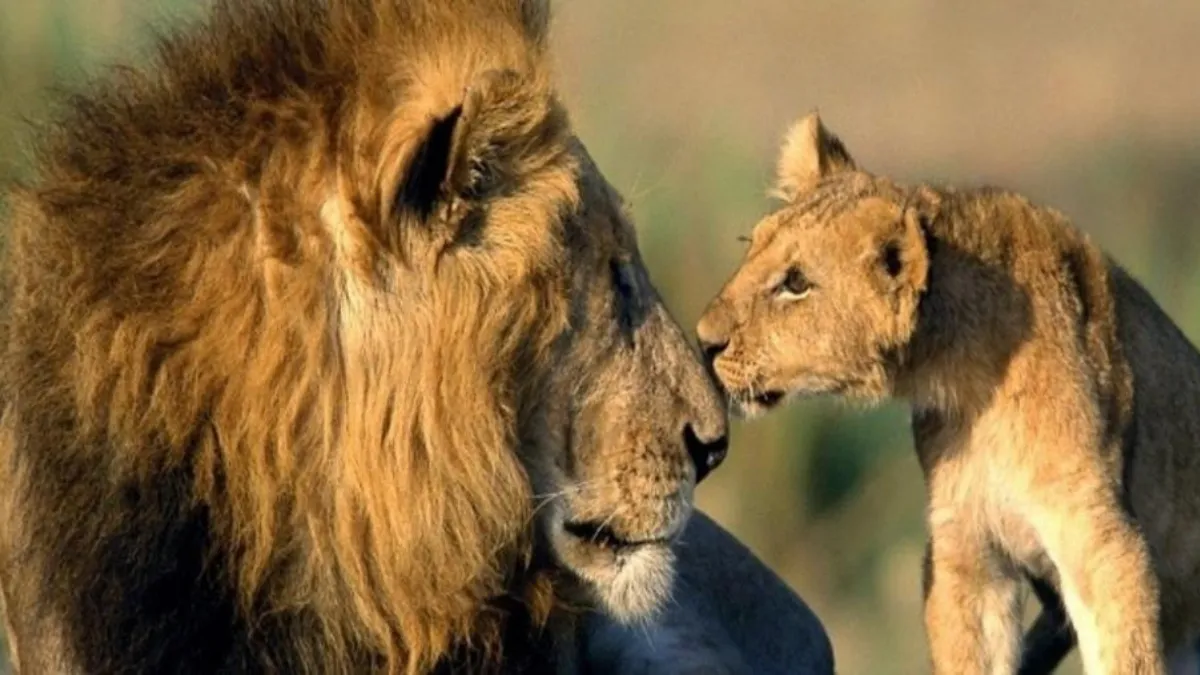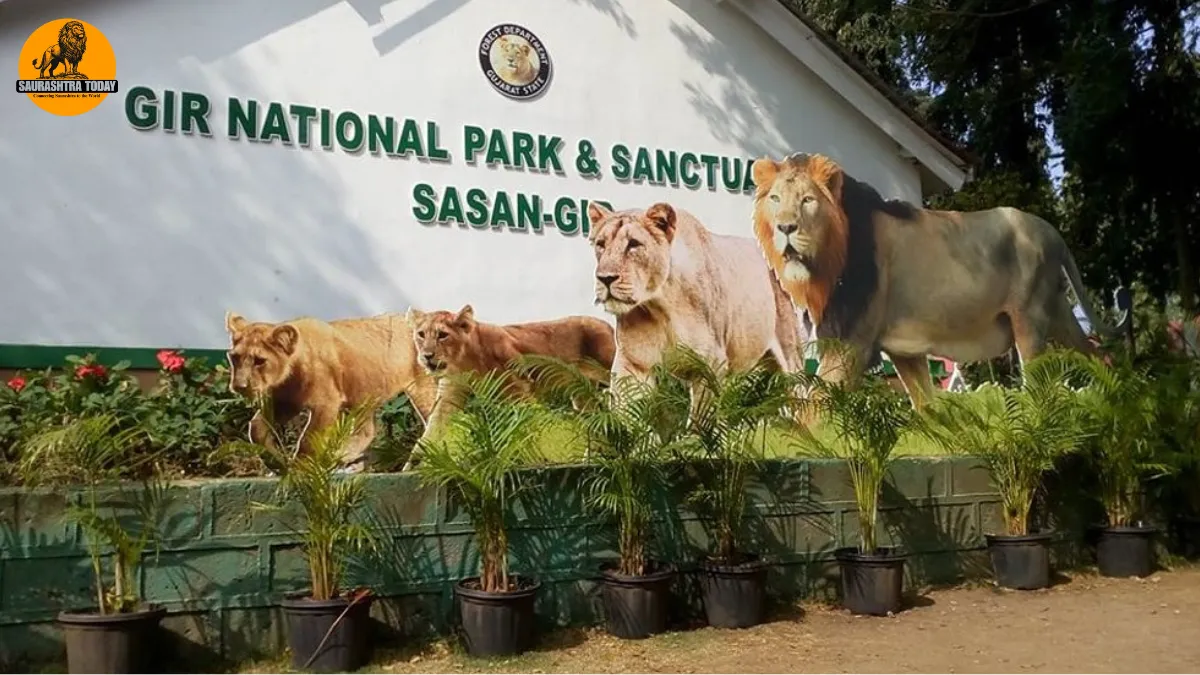Nestled between Veraval and Junagadh in Gujarat, Gir National Park spans over 1,412 square kilometers of hilly forests and undisturbed wilderness. This sanctuary is globally renowned as the final home of the majestic Asiatic lion (Panthera leo persica), offering nature enthusiasts a rare chance to witness these magnificent predators in their natural habitat. A visit here is not just about lions; the park is home to a diverse array of wildlife, birds, and plant species, making it a paradise for eco-tourists and wildlife photographers alike.

Wildlife Safari at Gir National Park
Taking a safari through Gir National Park is an unforgettable experience. The dense forests provide a natural backdrop where you can spot lions, leopards, and other fascinating wildlife. While lion sightings are the main attraction, the sanctuary is also home to 37 other mammal species. Visitors often encounter chital (spotted deer), sambar (large deer), nilgai (blue bull), chousingha (four-horned antelope), chinkaras (gazelles), and even crocodiles. The rare sight of leopards adds an extra thrill to the safari.
For bird lovers, Gir National Park is a treasure trove, hosting over 300 species of birds. Many of these species are residents, allowing birdwatchers ample opportunity for observation. The park’s rich biodiversity makes every safari unique, whether you are spotting wildlife or simply enjoying the untouched forest landscape.
How to Access Gir National Park Safely
Access to the sanctuary is strictly regulated through safari permits, which can be booked online in advance through the official portal: Gir Jungle Trail Booking. This ensures the safety of both visitors and wildlife while maintaining the park’s ecological balance.
If you are unable to secure a permit, the Devalia Safari Park within the sanctuary offers an alternative. This fenced-off area guarantees wildlife sightings, including lions and leopards, in a more controlled environment. While this experience is slightly staged, it is perfect for those eager to see Asiatic lions up close.
Devalia Safari Park and Gir Interpretation Zone
Located about 12 kilometers west of Sasan Gir village, the Gir Interpretation Zone, also known as Devalia, covers 4.12 square kilometers within the sanctuary. This zone offers an easy introduction to Gir’s diverse wildlife through 45-minute bus tours that run hourly. Here, visitors can spot not only lions and leopards but also foxes, mongoose, and blackbucks. The area is designed to showcase the park’s natural beauty while offering guaranteed wildlife sightings, making it ideal for families and first-time visitors.
Also read: President Murmu to Visit Gir National Park: Safari Opens Early for Historic Occasion
Conservation Success Story
Gir National Park has a remarkable conservation history. Established in 1965, the sanctuary’s 259-square-kilometer core area was declared a national park in 1975. At that time, the Asiatic lion population was under 200. Thanks to dedicated conservation efforts, the population has risen to 674 as per the 2020 census.
However, the sanctuary’s growth has come with changes in human habitation. Many members of the maldhari community, traditional herders, have been resettled to reduce competition between livestock and wild herbivores like antelopes, deer, and gazelles. Approximately 1,000 people still reside within the park, and their livestock constitutes about a quarter of the lions’ diet, highlighting the delicate balance between human activity and wildlife preservation.
Best Time to Visit
The ideal time to visit Gir National Park is during the winter months from November to March. During this period, the weather is pleasant, making safaris more comfortable and wildlife sightings more likely. The park remains closed annually from June 16 to October 15, coinciding with the monsoon season, to allow the forest ecosystem to rejuvenate.
Also read: World Animal Day 2025: Why This Global Movement Matters More Than Ever
How to Reach Gir National Park
By Road: Gir National Park is accessible via Junagadh (71 km) and Veraval (42 km), both of which are well-connected by bus services.
By Train: The main railway hubs connecting to the park are Junagadh and Veraval. Additionally, Sasan Railway Station operates meter-gauge trains connecting Junagadh to Delvada and Amreli to Veraval, offering convenient access.
By Air: The nearest airport is Keshod, located about 54 km from the sanctuary. From here, visitors can hire taxis or take local transport to reach the park.
Plan Your Safari Trip Online
To ensure a smooth visit, all safari bookings in Gir National Park must be made online. The official website provides a user-friendly booking platform: https://girlion.gujarat.gov.in. Booking in advance is recommended, especially during peak tourist season, to secure your spot and enjoy a hassle-free wildlife adventure.
Also read:Vantara India: Inside the World’s Largest Wildlife Rescue and Rehabilitation Center
Conclusion
A visit to Gir National Park is more than a safari; it is an immersive journey into the heart of India’s wilderness. From spotting the majestic Asiatic lions to exploring the rich variety of mammals, birds, and plant life, every moment in the park offers a unique connection with nature. Whether you are a wildlife enthusiast, a birdwatcher, or a family looking for an extraordinary adventure, Gir National Park promises an unforgettable experience while supporting one of the most successful conservation stories in the world.


















